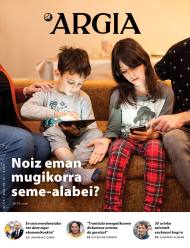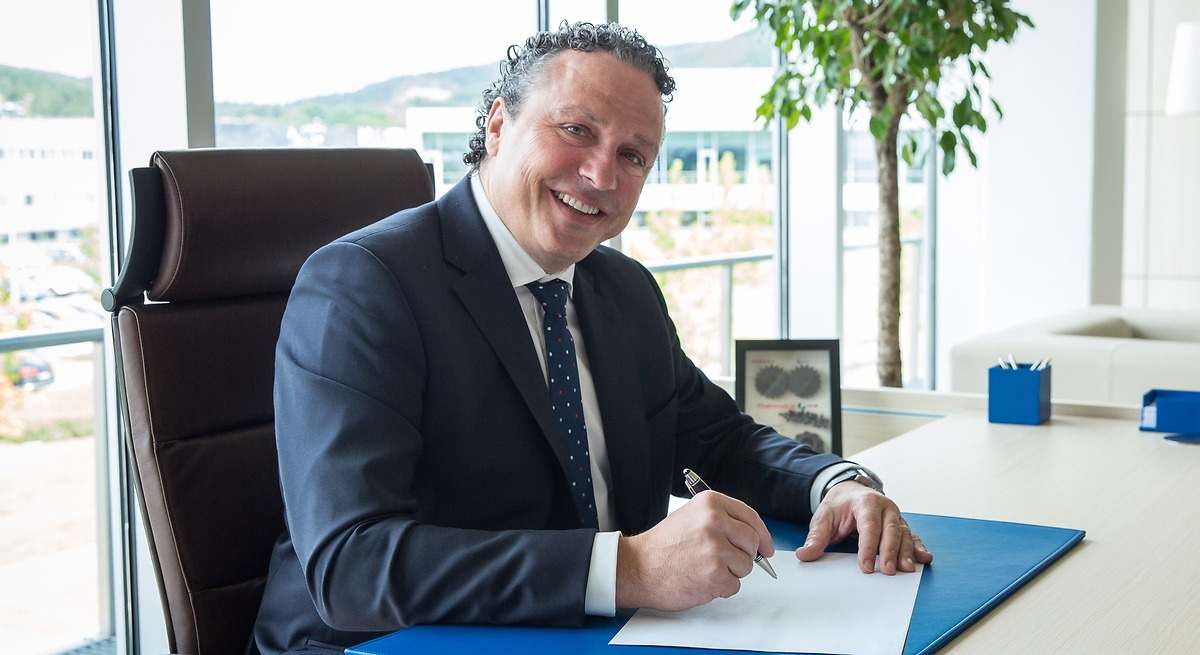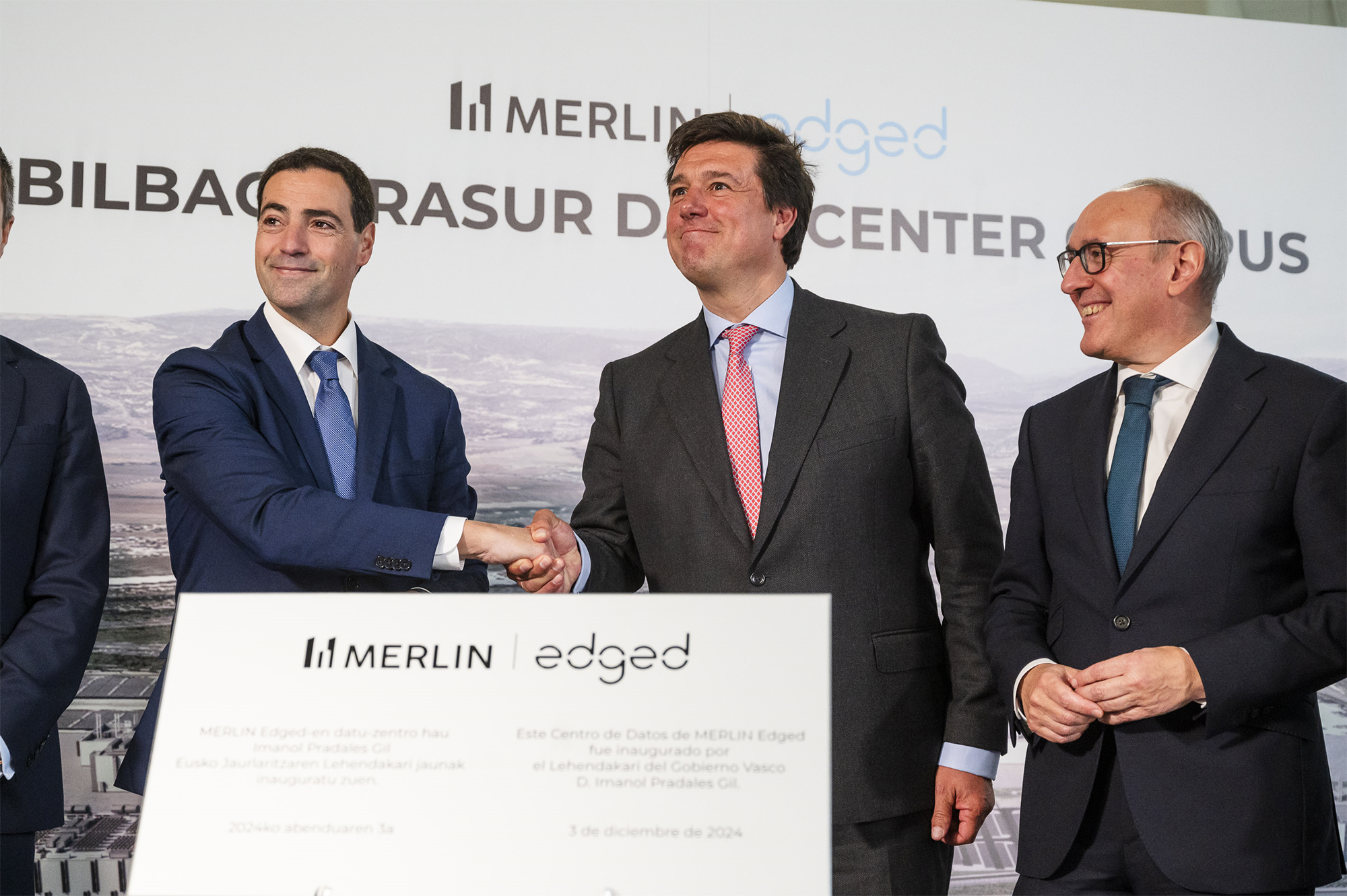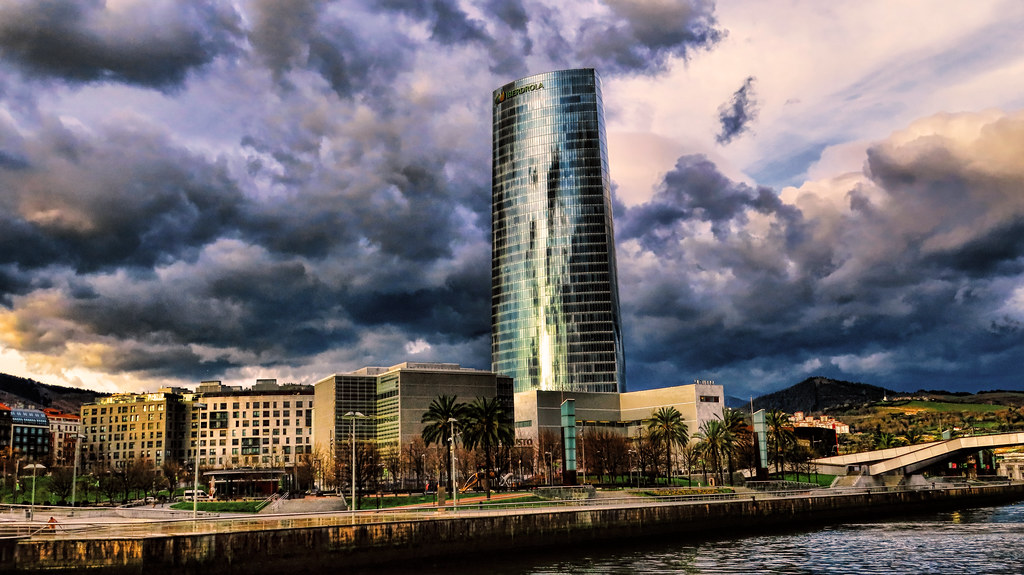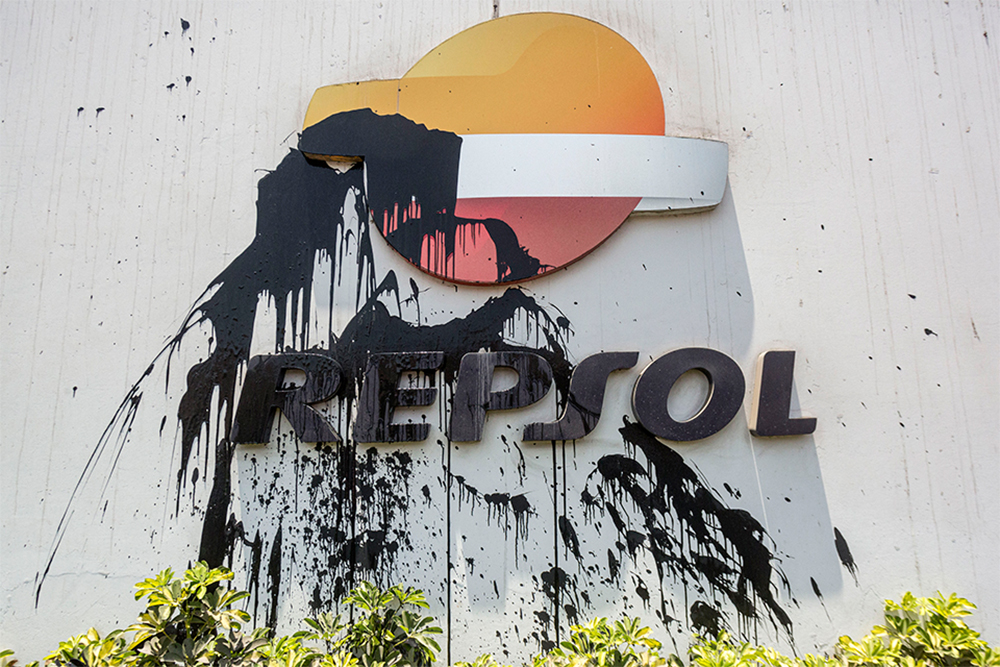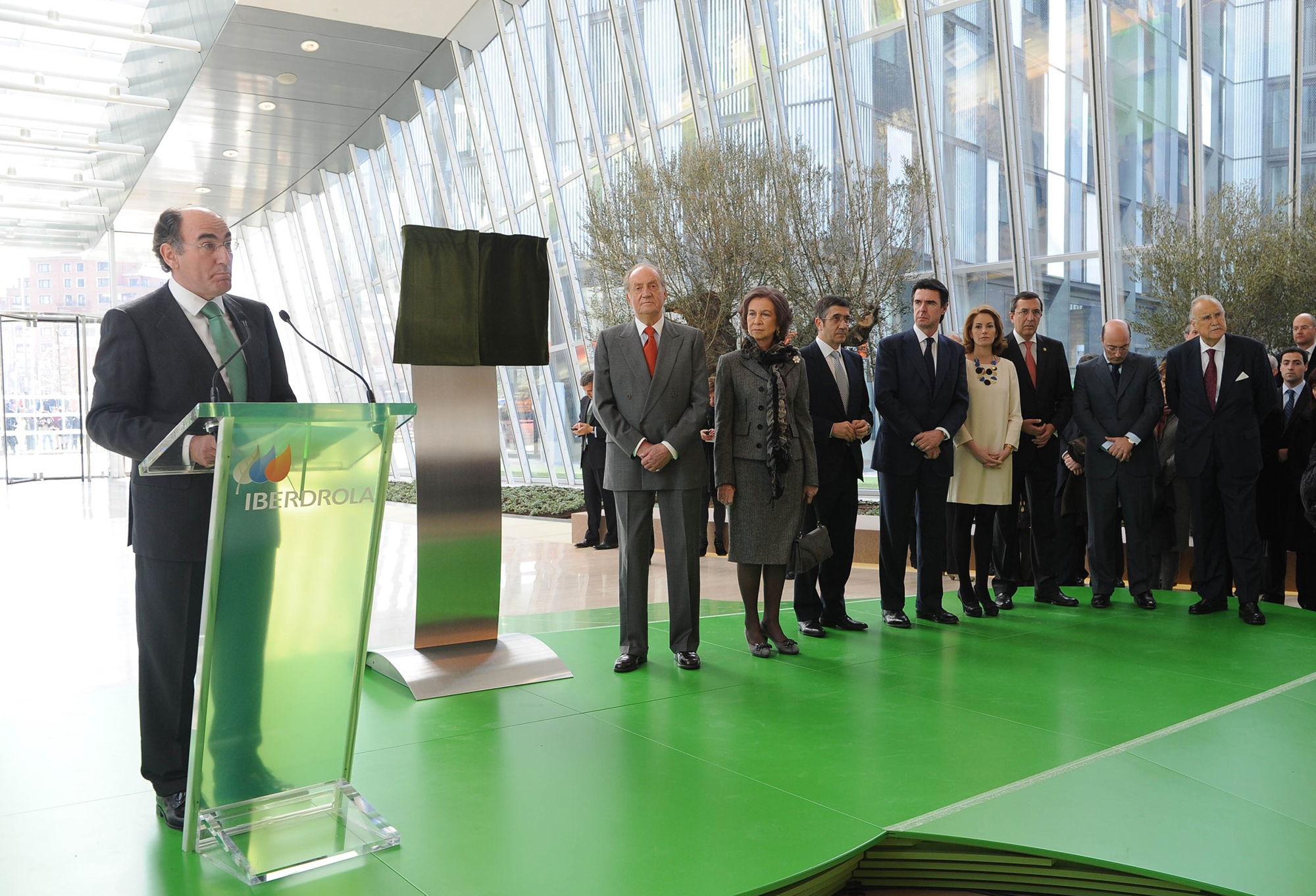“Renewables have little green”
- Jackeline Romero Epiayu is the Wayúu human rights defender. Colombia is originally from the department of La Guajira, like most of the indigenous people Wayúu. Located in one of the largest open-air coal mines in the world, it has reached its surrounding area violations of natural and human rights. Romero guides his work in the Sütsuin Jieyuu Wayúu (Wayúu Women's Force) movement to denounce these violations and to make visible the effects of the armed conflict in Colombia in his country. For this function he receives death threats. To participate in the Game of Life conference organized by NGO Mugarik Gabe, we have taken advantage of her trip to Euskal Herria to talk to her.

In 1976, the contract signed by the Colombian company Carbocol and the transnational company Intercor launched the coal exploitation plan in La Guajira. Romero, born the same year, discovers firsthand the creation and expansion of the coal mine El Cerrejon, built next to his home. Over time, as she becomes aware of what the mine was affecting her lands, she has directed her action to denounce the malpractice and violations of El Cerrejon's rights, until she brings her own life into play. It is costly to defend the land and the lives of citizens against economic interests. According to data from Global Witness, Colombia is one of the most dangerous countries for defenders, where more defenders were killed in 2020, namely 65. Unfortunately, Romero tells us that death is a risk to assume, for a clear reason: “It would not have to claim rights, because the State has an obligation to guarantee them. But the indigenous reality is different.”
In the Game of Life published by NGO Mugarik Gabe. According to the author Jesús González Pazos in his book Infringing human rights and nature, with the arrival of El Cerrejon the Colombian Government and transnational companies proved development, job creation and responsible exploitation. However, impoverishment, displacement, pollution and disease are what has left them in their heritage. “This mine causes nothing to shine in Guajira, besides the sun, because the polluting dust from coal is being covered in black in that area,” you can read in the book.
The Sütsuin Jieyuu Wayúu (Wayúu Women’s Force) movement has for years been denouncing all this with special attention to the impact on women. At the same time, one of its lines of work is to train wayúu women to be able to enforce the rights that have been violated on numerous occasions. This practice has led to death being threatened.
How has El Cerrejon changed to La Guajira, its peoples and its life?
The mine has absorbed all the land necessary for exploitation, which has led to the de-territorialization of its indigenous, afro-peasant communities. On the arrival of the company, Convention 169 of the International Labour Organization (ILO), which recognizes the right of tribal and indigenous peoples to be consulted on projects they plan to carry out in their territory, was not yet in force. Thus, the company did not consult, nor did it have any control by the government. Subsequently, the mine has been extended and Convention 169 should in principle comply with the right of consultation, but, on the contrary, when the company has been able to break the rules so as not to have to consult the people.
The central and upper part of La Guajira, the closest to the north and to the sea, is semi-desert. The mining area is crossed by the river Ranchería, the only river of La Guajira, born in Sierra Nevada and flows into La Guajira and the Caribbean. The company has polluted the waters in the lower and middle areas of the river, where toxic water from mining is accumulated. In addition, it has destroyed its tributaries, further weakening the river, all in a semi-desert area such as La Guajira and in a fragile ecosystem. In addition, a dynamite is used daily in the mine to break the ground and exploit coal, leading to an ever lower level of groundwater. Research says so. Consequently, access to groundwater is becoming increasingly difficult for communities further away from the river.
In addition, it has broken the social fabric, as soon as companies arrive, they introduce misinformation and create an atmosphere of division in the community. And in economic terms, La Guajira is today one of the poorest regions of the country.
.jpg)
If I am not mistaken, El Cerrejon is the second-largest coal company in the country and La Guajira is the second-poorest region in Colombia.
That is what the statistics say. In the capital of La Guajira, Riohacha, unemployment is the highest in Colombia. And in the region more than 5,000 children have died, far below. Many children die of hunger and thirst, and the mine is one of the main responsibility, but not the only one. To this must be added the institutional abandonment. Colombia is a racist and classicist government that has not guaranteed the indigenous community access to health, education or public services, fundamental rights. Indigenous people are also citizens with rights.
The company has created a very different scenario than they enacted before building the mine. What did they sell?
Upon arrival, the company filled the department with illusion, with false illusion of development, employment and better economic conditions. “Coal will be exploited, but it will bring many resources and inclusion to La Guajira,” was what was passed on.
The institutions also have their responsibility here, because the need to ensure that the company’s practices are the right ones, they have to ensure that the company meets the requirements, which guarantee the rights. The Colombian State has not done so.
They request compensation for violations of rights committed by the company.
To date, the company has refused to repair the damage. Getting it done is very difficult, because it seems that businesses, corporations, countries of origin also have no control over their activity. Cerrejon once had three owners: Swiss Glencore, British BHP Billiton and South African Anglo. They have sold and withdrawn their shares, and Glencore has become the sole owner, a transnational with a long list of bad practices. In this context, communities are afraid that, in the future, this company will sell its shares to a third party and will no longer face its responsibilities.
"The fear of these communities is that tomorrow Glencore also sells its shares to a third party and evades its responsibilities"
Mining has not harmed men and women at the same level. This has been pointed out by the Wayúu Women's Force.
First, when the company arrived, it held talks exclusively with the men of the communities. Wayúu's social organization is matrilineal, the family lineage is inherited through the mother, but the family authority figure is male: the maternal uncle, the grandmother's eldest son… It is a male culture, and that is where the first impact occurs when conversations like this begin. The word of women is not taken into account, the political participation of women is not recognized.
In addition, the fact that mines have turned water into a scarce commodity has had a direct influence on the lives of girls and women, who often go to seek water or wash clothes. The remoteness of water, 5, 10, 15 or 20 kilometres away, has significantly damaged their lives.
If we focus on health, through information collected in the communities closest to the mine, we have identified many cases of diseases that were previously rare. Many women have been diagnosed with breast and uterine cancer. There were very few cases before, so we have come to the conclusion that the mine has also had a direct impact on women’s health. We have asked the institutions to investigate, but we have not succeeded.
Furthermore, the pollution caused by soot from the mine has also affected the scarce vegetation in fragile areas such as ours, which also affects women differently. In fact, in the village of Wayúu it is women who practice traditional medicine and the areas where medicinal plants are currently growing are contaminated.
Once initiated, it could continue to list the damage caused to women by the mine.

What led Wayúu to join the Women's Force?
I think that is something that touched me. I didn't get up one day and decided to dedicate myself to this, I would say that life has led me to where I am. One of my grandmothers was a very advanced woman in her time, with a tenacity and an ease of relationship that was not silent. Thanks to its management, the first community school emerged. So my performance has some heritage.
In addition, my mother took care of leaving the community for school. This allowed me, in addition to my mother tongue – wayuunaiki – to dominate Spanish, among others. When I finished the studies, I went back to the community and started working as a professor, and I realized some things that were happening in the area. So I started collaborating in community management. Gradually I developed sensibility and criticity to issues like mine. I started to understand what was going on, and I realized that the communities were really alone in front of the mine.
I was also affected by an event in 2000. The company El Cerrejon took its lands from the African community of Tobacco, one of the first communities expelled from their lands, for which they used the army, the public force, the machinery… It struck me how they were driven out of their lands without offering them any other place. They were simply expelled.
They have been receiving threats since 2008. You yourself have received death threats. Who is behind them?
The movement offers support to the mine-affected communities and those affected by the Colombian armed conflict. We have come to the conclusion that we have received threats from this action. Now and here I cannot say and say “company is the one that threatens me”, because I have no evidence. However, it is clear to the members of the movement that our action is the cause of the threats. We have taken action, we have acted on issues that are complex, where will the threats come from?
In Colombia, paramilitarism has always been allied with public forces, corporations and corporations. In some cases, as in the mines of Caesar, where trade unionists have been killed and the case has been tried. The point is that in the case of El Cerrejon this link has not been demonstrated. When we received threats on behalf of Aguilas Negras [2020], what we heard from the government and justice was that there is no such group, that there are only alproches writing pamphlets. This is the argument used by the Colombian Public Prosecutor’s Office. But several threats and murders happen in the country. That's proven. How can they say they don't exist? They know they're paramilitary groups.
"The members of the movement are clear that our action is the cause of the threats. We have taken action, we have acted on issues that are complex, where will the threats come from?"
We are unable to identify, prosecute and investigate the perpetrators of the threats, so we face absolute impunity. It is too complex a context for ensuring the security of social leaders, and the State, above all, stigmatizes its work.
How do you wear it? How have you been affected by receiving threats?
The first threat was not directly received by me, but by my daughter who was about to turn 15. Although it was a message to me, they transmitted it through him. The logic in the liver is that your sensitive part is your children, so we will act there. In this sense, threats to women also have their peculiarities.
Over time, I've learned to live with fear, because I can't let it destroy my life. Today I wear this dress, so if I go out to the street tomorrow, I will change the clothes. I've learned how to walk like this. I've lived through hard times, because when you're threatened, not only do they threaten you, and family pressure is the result. “Why are you there? That they may die and cause your daughters to be put to death.” And the community alike, fear prevails and they say, “Hey, we don’t want us to get into this anymore, let us leave things as they are.” These are strategies designed by those who threaten to silence the voice of communities to silence their demands and complaints.
We're not waiting for death, but a list is like it's latent. Today it is a friend who killed him, yesterday another was killed, and tomorrow you know, maybe you can be. This is how we live. I would say that that is the way in which Colombian leaders live all of this. It's very hard and we have to do therapy, from spirituality and from what we do to what we can. That is what has touched us.
Decarbonisation
“Decarbonisation is not real for our territories, as they continue to exploit coal here. However, in Colombia, not a single gram of coal is consumed from La Guajira. Its energy matrix is hydroelectric. Coal goes abroad: To the US, to Europe, to Asia… That’s why we serve the consumer countries.”
Transition… just?
“The discourse of the energy transition is strange to us. That's what governments, even the anbientalist institutions, talk about, but we're far from talking about transitions in territories like ours, where exploitation is part of our reality, because our question is: transition, where? Where will we go if we have not even repaired the damage caused by the operation? People have not had time to think about the transition.
When we hear the “just transition”, the first thing that comes to mind is the unjust transition of governments. Because governments are thinking of transitions based on the interests of capital and with one single objective: to continue to market natural resources. They have nothing right if they do not take into account the territory to be exploited and their communities. In these parameters there is no just transition or a green economy.”
Green energy
“Granted the first licenses to open the wind power plants of La Guajira. The damage caused by the coal mine has not been repaired and we must now also face new monsters who talk about mitigating climate change. They say wind energy is fair, green. But renewables have little green, because we're seeing companies coming in. The ways of exploiting resources are new, but the conditions are the same as in the past: no room has been made for proposals, opinions and the participation of the inhabitants of the territory”.
Frankismoa ez zela 1975ean amaitu diktadoreak ohean azken hatsa eman zuenean, hori badakigu. Erregimenaren haziek bizirik iraun zuten poliziaren tortura ziegetan, justizia auzitegien sumarioetan eta militarren zein politikarien deklarazio kolpistetan –Aznarrek azkenaldian... [+]









